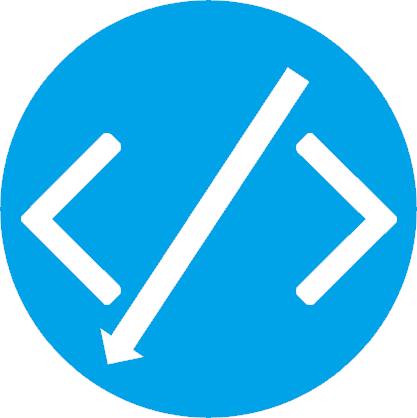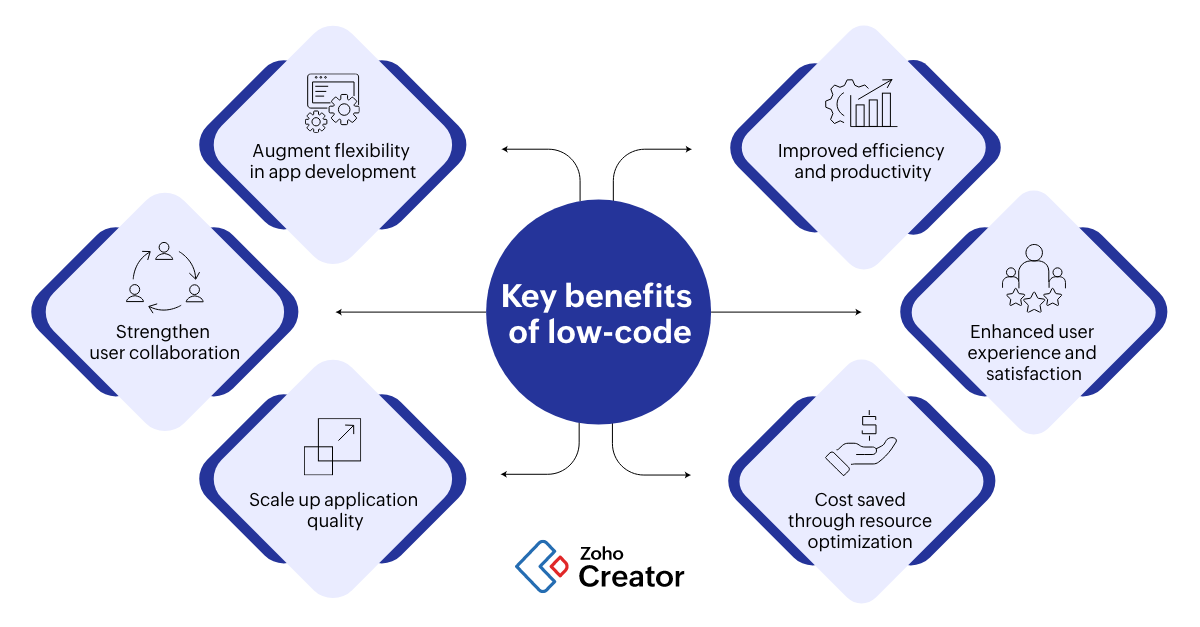Good Tips For Selecting Low-Code Platform Examples
Good Tips For Selecting Low-Code Platform Examples
Blog Article
Benefits Of Low-Code Application Development In Terms Of Integration Capabilities
Low-code development of apps has numerous advantages, particularly in terms of integration. This is crucial for creating applications that can effortlessly connect to platforms and services. Here are the key advantages: Pre-built connectors and APIs:
A Wide Variety of Connectors : Low-code platforms usually come with a large library of prebuilt connectors to the most popular enterprise systems (e.g. ERP CRM, databases and cloud services). Integration of these systems is made easier.
API Integration: A lot of platforms provide out-of-the-box API integration features. Developers can effortlessly connect with data from other sources and services.
Simple to use:
Integrations using Drag and Drop: Integrations can be set up using drag and drop interfaces. Developers and non-developers can do this without having to write extensive code.
Visual Workflow Builders Visual tools to design workflows and data flow aid in understanding and establishing integrations with greater ease.
Standardized Integration Methods:
SOAP and restful services that support web services common protocols such as REST or SOAP makes integration easy with a large variety of platforms and systems.
OData Standards and Other Standards Support for standards, like OData provides easy access to data as well as its manipulation across multiple platforms and apps.
Real-Time Data Synchronization:
Real-Time Integrations: Low-code systems can handle real-time data sync between applications and systems. This makes sure that the information is current and consistent across the entire organization.
Event-Driven Architecture: Some platforms have event-driven architectural designs, allowing applications to respond in real-time to events, which are crucial for interactive, dynamic applications.
Legacy System Integration:
Connecting old and new Systems Low-code platforms usually include tools for integration with existing systems, allowing organizations to modernize their IT infrastructure without having to completely revamp the existing system.
Data Migration: Built-in tools allow you to transfer data from older applications to new ones that are built on platforms with low-code.
Integration of Third Party Services:
Cloud Services: Seamless Integration with Cloud Services such as AWS Azure Google Cloud and Google Cloud makes it easy to deploy applications.
Business Application Integration: Low-code platforms can integrate with various business applications, such as Salesforce, SAP, Microsoft Dynamics, etc. to create a seamless workflow that is able to be used across various business functions.
Simplified Data Management:
Unified Data models: Certain low-code platforms offer unified data modeling which makes data integration easier and management across various systems.
Data Connectors: These pre-configured data connectors provide easy access and manipulation of data derived from various sources.
Security and Compliance
Low-code platforms help ensure integrations comply with security protocols and standards, protecting data in the process of transport and in rest.
Security Features: These platforms usually include features to ensure that integrations comply with regulations (e.g., GDPR, HIPAA), providing security for companies that handle sensitive information.
Extensibility:
Low-code platforms permit the creation of customized scripts and programs to meet more complex integration requirements. The flexibility available without compromising ease of use.
Plug-in Ecosystems: A plug-in ecosystem can be used to expand the integration capability and permit users to expand the functionality when needed.
Low-code platforms provide a powerful device to build interconnected, efficient and scalable apps. They facilitate the process of connecting disparate system, improve the flow of data and enable enterprises to embrace new technologies while leveraging existing ones. Check out the best helpful hints for Low-code Platform for application development for website examples including lowcode no code, application development platforms, cross platform app development, rapid application design, develop cross platform mobile app, sso azure, microsoft azure sql, sso azure, low code platforms, rapid action development and more.
The Benefits Of Low-Code Development In Terms Of Flexibility, Scalability And Scalability
Low-code application creation offers several benefits, especially in terms scaleability. It is essential to build applications that will develop with your business and be able to adapt as the business changes. Here are the key advantages: Rapid Scaling
Cloud-Based Platforms: Many platforms that support low-code are cloud-based. They let applications easily scale up and down with the cloud infrastructure. This allows businesses to handle increased loads without worrying about server management.
Auto-Scaling Features: Built-in auto scaling features automatically adjust resources based on the demand. This allows for consistent performance even in peak times without any manual intervention.
Flexible Architecture:
Low-code platforms facilitate modular design where components can independently developed, evaluated and scaled. This is a fantastic way to enhance flexibility. It also makes it easy to modify and expand the functionality of a system without having the entire application affected.
Microservices Integration Microservices Integration: Microservices Architecture support lets applications to be developed by combining loosely coupled services, enhancing the scalability as well as flexibility.
Customizable Solutions:
Extensibility : Low-code platforms allow developers to expand capabilities beyond what is available in standard features. This allows the satisfaction of specific business requirements without limits.
Integration with Third-Party Integrations: Integration of third-party APIs and services allows businesses to add additional functionality to their applications.
Agile Development and its deployment:
Continuous Delivery and Deployment: Low-code platforms can support agile methodologies which allow continuous integration, continuous delivery (CI/CD). This allows for rapid deployment of new features and updates, while ensuring that applications can evolve quickly in response to user feedback and market changes.
Iterative Development - This low-code model permits applications to be improved and scaled incrementally, reducing risk and allowing for a more controlled expansion.
Resource Optimization
Efficient Resource management: Platform tools that use low-code help optimize resource use by monitoring and managing the performance of applications. This allows resources to be efficiently used, and can be scaled down or up depending on the needs.
Load Balancing: The integrated load balancing feature distributes workloads equally among servers. This enhances the application's capacity to handle high demand, and guarantees the same performance.
Global Reach
Multi-Region Deployment: Low code platforms typically support deployment across several geographical regions, allowing businesses to provide low-latency services to users worldwide. This is crucial when applications have an international user base.
Localization Support for localization integrated into the software, allowing applications to be adjusted for different languages or regional requirements. This increases flexibility for various markets.
Maintenance and updates
Simple Maintenance : Low-code apps' visual and modular nature simplifies maintenance tasks. This lets updates and bug fixes be completed quickly and without lengthy downtime.
Version Control: Integrated versions control systems permit the safe release of updates and rollbacks. Previous versions can also be restored in the event that they're needed.
Cost Efficiency:
Low Development Costs - By cutting down on the amount of code required, low code platforms can lower the development cost. This allows to scale up applications without having to increase development efforts and expenses.
Pay-As.-You-Go: Many lowcode platforms provide flexible pricing models, including pay-as.-you-go. They align costs to actual usage and growth, allowing financial flexibility.
The majority of low-code app developers provide a lot of flexibility and scalability that allows businesses to quickly build scalable and flexible applications. These platforms can quickly adjust to changing demands and make the most efficient use of resources, and continuously enhance, allowing both applications as well as businesses to expand and expand. Read the most popular wavemaker.com coding for more examples including rad development, azure sql, mobile app development platforms, cross platform mobile development, application modernisation, rad development, application modernisation, cross platform app dev, developing mobile apps, cross platform mobile app development and more.![]()
Support From Vendors And Community Are Two Of The Advantages Of Low Code Application Development.
Low-code development platforms offer significant advantages in terms of support from vendors and the community. These are important for successful implementations, ongoing maintenance, and continuous development. These are the main benefits: Support
Comprehensive Technical Support:
Dedicated Support Teams: Many low-code software platforms offer access to support teams that can assist with technical issues, troubleshooting, and guidance, ensuring that issues are addressed quickly.
Some vendors offer 24/7 support. This is especially beneficial for businesses that operate globally and have various time zones.
Training and Onboarding
Vendors typically offer structured programs for users, such as tutorials and webinars. They may also provide certification courses.
Personalized Onboarding: Many companies offer customized onboarding services that help new customers to use the platform efficiently and adapt it to meet their requirements.
Updates and regular updates:
Continuous Improvement Lowcode platform providers typically regularly release updates that contain new features, performance improvements, and security patches. This ensures that the platform remains up-to-date and secure.
Feedback Integration: Many vendors incorporate user input into their development cycles. This ensures that the platform adapts to the ever-changing demands and needs of its customers.
Comprehensive Documentation:
Documentation - In depth: A comprehensive and well-organized documentation covering everything from basic use to advanced customizations are often accessible. This lets users solve issues on their own.
API References API documentation can help developers to customize and integrate their applications using the Low-Code platform.
Professional and Consulting Services
Expert Consulting: A lot of firms offer consulting services that aid users with complicated design and implementation and strategic planning.
Custom Development Services: A few vendors offer custom development services to create functionalities or integrates for their clients that aren't readily accessible.
Community Support
Active User Community:
Forums and Discussion Boards: Many low-code platforms have vibrant online communities in which users can ask questions, share solutions, and work together on the best practices.
User Groups & Meetups: Local or virtual user group and meetings are a great opportunity to network, learn and sharing knowledge.
Knowledge Sharing and Collaboration
Community-Contributed Resources: Users often share templates, modules, and extensions that they have developed, which can be reused or adapted by others, accelerating development and innovation.
Crowdsourced Solution Finding: The collective wisdom and experience of a group can be a great resource for solving difficult problems.
Learning and Development
Community-led training: Many groups organize workshops, training sessions and webinars. They are typically conducted by experts in the field, who provide practical advice and advanced techniques.
Online Tutorials and Courses Community members develop and publish tutorials, online courses and how-to guides. This helps improve the learning resources that are accessible to the users.
Feedback and Influence
Forums for Product Feedback: These forums typically offer feedback channels to the manufacturer, which can influence the creation of new features and enhancements.
Beta Testing Programs: Community members who are active have the opportunity of participating in beta testing programs. It gives them an early glimpse of new features as well as a chance to help shape the evolution of the platform.
Recognition and Support
Community Recognition Programs - Many companies offer recognition programs that acknowledge the contributions made by the active members of their community such as MVP (Most Valuable Professionals) programs.
Peer Support Peer Support: Community members typically offer support to other members by sharing their knowledge and offering guidance to users who are less skilled. This helps create a more collaborative and supportive atmosphere.
Overall, the combination robust vendor support and an active and active community provides an entire support system for the development of low-code applications. The combination of strong vendor support and an active, engaged community provides a comprehensive support ecosystem for development of low-code applications.